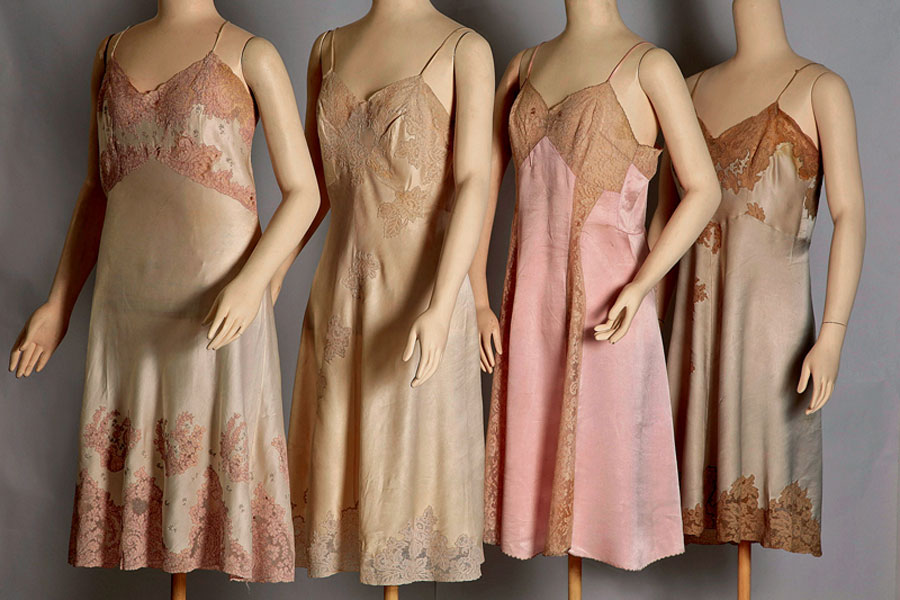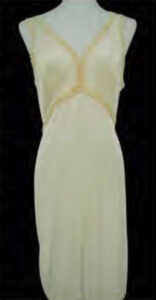The Slip Dress Question

The Slip Dress dates back to the 1920’s, when the streamlined “Flapper” dress required feminine undergarments in order to hang properly. Unstructured, clingy and light as a feather with it’s thin spaghetti straps and it’s Lacey edges, this slinky descendant of the petticoat also carries with it a sense of nakedness that draws attention to the body, giving it sex appeal.
These new style chemises which were highly decorative, deliberately sensual and often transparent, became the frontrunner of today’s fashion slip. They were made of rayon, crepe de Chine or silk picot, so they were smooth, soft to touch and considered to be the height of luxury.
The slip continued to be worn in the 1930-1940’s, changing its shape and hemline as required by the current fashion. As American regulations regarding advertising became more relaxed in the 1950’s, the language of lingerie was changed forever. In 1958 the US company, Maidenform promoted its bras and slips on television for the first time. Vogue and other magazines showed beautiful women in their underclothes bringing the intimacy of lingerie into the public domain. The slip took on a sexy image in the bedroom thanks to the silver screen; curvaceous slip clad starts such as Elizabeth Taylor in Cat on a Hot Tim Roof (1958), and Janet Leigh in Psycho (1960s), sparking demand for similar styles in boutiques and shopping malls.
The slip moved out of the bedroom and into the fashion era in the 1990’s, beginning the “waif” look and a desire for a more feminine style of dress. Whether teamed with dainty kitten heels and a cardigan or dressed down with a denim jacket and biker boots, the slip will never lose it’s allure.

~ Bikinis, Bell-Bottoms and Little Black Dresses, by Kate Mulvey

